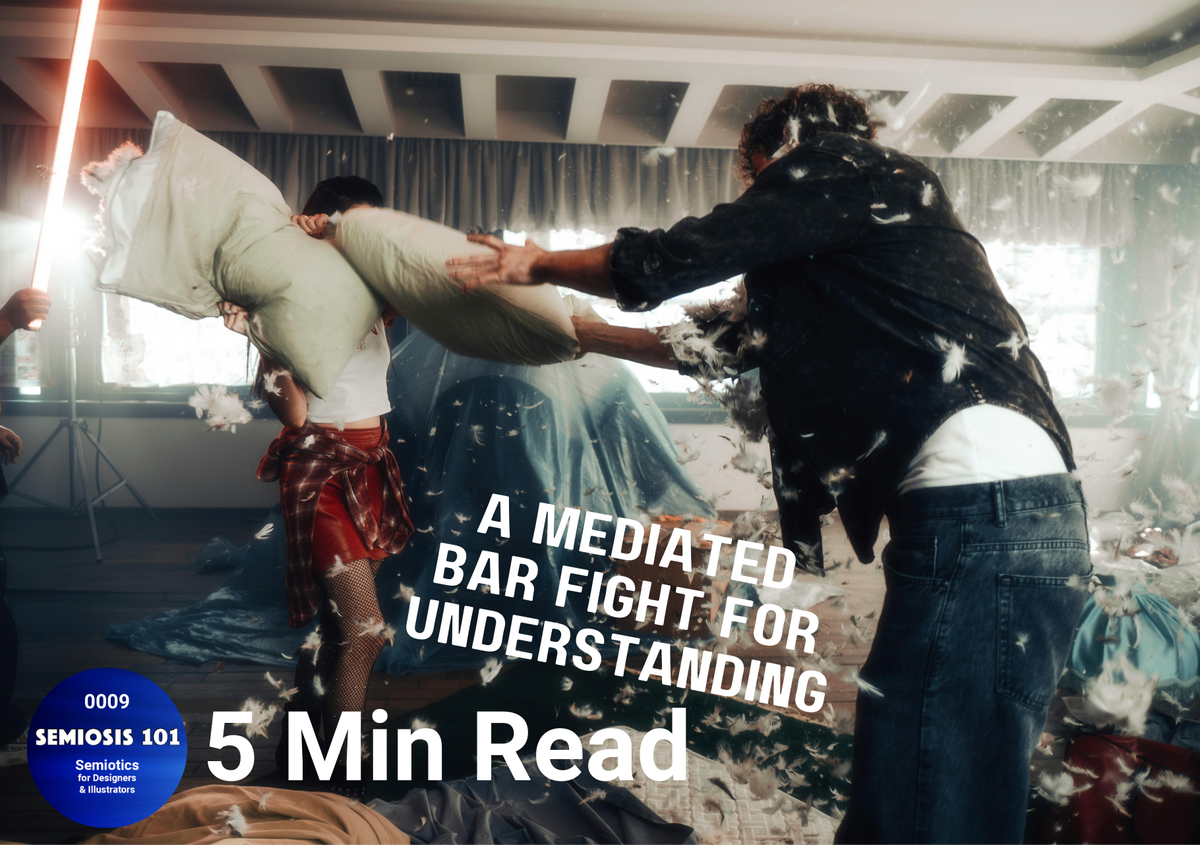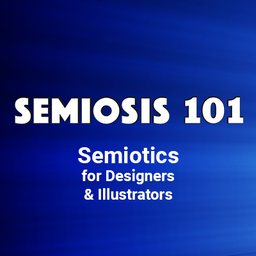BLOG 09: A Mediated Bar Fight For Understanding

Semiosis 101 - 5 minute semiotic read
A concept, a representation and an interpretation walk into a bar…
To understand how Peirce’s Semiosis works, it is necessary to go deeper into his triadic division of signification.
How I opened this post could be the beginnings of a bad joke. Instead, there is a bar. Not a pub, but a perceivable medium between the worlds of thought and physical reality. Visual communication has to made through this medium, from thought to reality, from interpretation to action.
The semiotic process of sign-action is a triadic determination flow between a concept (Peirce’s Object), its representation (Peirce’s Representamen), and the interpretation (Peirce’s Interpretant). Your visual communication using encoded semiotic signs in your visual language, has to
mediate between one side of this bar to the other. The physical reality is where your design or illustration exists.
The semiotic determination flow moves from a concept to be represented, across this medium, from thought to reality.
This representation of the concept is in the physical realm, but to be interpreted, it needs to mediate the concept through the visual language used in the representation. For the interpretation to be mediated to the original concept, the representation needs to have an effect on the thoughts of the audience.
Peirce’s determination flow is pivotal for you illustrators and designers. Your client’s brief contains the concept(s) to be visually communicated. You, as a designer or illustrator, craft your visual language to connect with your audience, by selecting the most appropriate representation to mediate the concept to the audience.
Peirce’s coup de grace in Semiosis is including the audience in the semiotic sign-action as interpreters.
The determination flow is visualised as an inverted pyramid, with a triangular flow anti-clockwise.
(Please don’t ask me why anti-clockwise, as that’s above my Peircean pay grade!)
This triangular flow from the concept… to its representation … to its interpretation doesn’t end there. Semiosis is ongoing, potentially infinite, and helical. The flow keeps looping back. A representation actions an interpretation. An interpretation leads to a concept.
Being pragmatically technical here, what Semiosis is actioning is a semiotic sign (representation) has been perceived as meaning-bearing. It has put a thought in the mind of the audience that this sign bears some meaning to them.
As the audience interprets the meaning, their thoughts draw on past lived experiences. As they begin to interpret they create further “mental signs” to build understanding. The concept emerges through audience participation.
People do not interpret full meaning in one big HIT!
Meaning comes from cycles of representation, interpretation, representation, interpretation. After each interpretation (which may be milliseconds of subconscious processing), the audience builds meaning. If the semiotic mediation is successful, then the representation facilitates the audiences to interpret the intended concept. Otherwise, the audience will go off on tangents and miscommunication will occur. The correct interpretation should reflect the concept.
Concept and interpretation are located on one side of the medium in the world of thought. The representation is in the physical world of the creative. This helical interrelationship in Semiosis is an incredibly powerful structure you can use to structure your visual language decisions.
Within Visual Communication Design, we can also frame this determination flow as an analogue relationship between the Client/Creative/Audience.
In Peirce’s Semiosis, perception and mediation are crucial.
As designers and illustrators you mediate the concept. Your audience perceives the concept through cycles of building meaning. How you use your visual language to represent the concept needs to connect with the lived experiences of your audience.
As I said earlier, Peirce’s coup de grace in his pragmatic semiotic theory over Saussure’s/Barthes’ Semiology, is Peirce’s direct involvement of the audience as interpreter. This key triadic (three-term) difference of Semiosis, over the dyadic (two-term) Semiology of signifier/signified, is where semiotic signs have action. The sign-action does not end with your illustration or design. It does not end with a client’s desire that you visually communicate what they want.
Sign-action is determination flowing to the audience, who need mediating to understand the meaning, and act.





